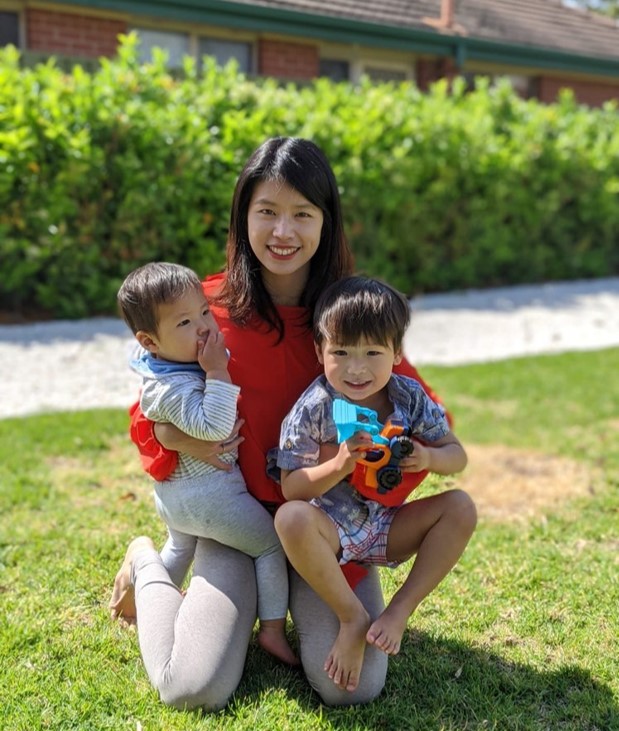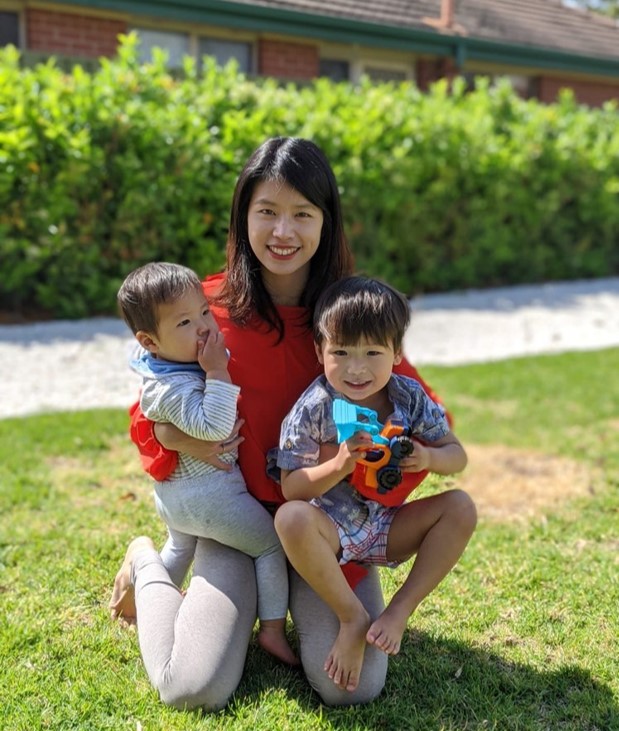
Yvonne, the mom behind Bilingual Kiddos is sharing her bilingual journey —from activities she does with her own kids to tips for us parents. Here’s her story.
Where are you, what is your bilingual background? I am Malaysian-Chinese and live in Australia. I speak English and have studied Chinese and Malay. Prior to having children, I didn’t speak it regularly. My husband and I speak to each other in English because that’s most comfortable and because we live in Australia! This changed after having kids. I started this bilingual journey because I really want to pass on the Chinese language and heritage to my two sons (3 & 1-year-old), and I realized that if I don’t start trying, no one will!
How did you start? I really believe that learning a second language is all about communication and meaningful exposure—and needs to be done in a natural, engaging, and fun matter—not forced. To that end, I try to do adopt things that are:
1. Based on Daily Life: This way it doesn’t feel like “learning” but rather like “using the language.” Some activities here could include:
- Daily activity naming: I created a printable of things that toddlers do on a daily basis—like “take a bath” or “brush your teeth.” As this is something that they do every day, it gives us an opportunity to name it frequently and reinforce those phrases in a very natural way.
- House labeling: I try to introduce Chinese characters naturally. So I take construction tape and label things around our house – like door (门 mén) or bed (床 chuáng) or fridge (冰箱 bīng xiāng). That way, when we go to the object, my sons will see it. Sometimes we may name it, sometimes they will just see it. I try not to do too many at once, so it isn’t overwhelming for my son and he thinks it’s a game.
2. Make it Fun: I’m a big believer in learning through play. You find different philosophies in Western vs Asian countries. In Asian countries, kids are expected to read at a young age, so you’ll find the materials are very focused on character recognition and leveled learning. Western countries have more emphasis on free play. Perhaps because we live in Australia, but I try to have my kids learn through play, especially since they are young and just starting out.
- Layer language on top of play activities: It probably seems very basic but we just take normal play and we layer the second language on top of it. For example, when we do sorting activities which a lot of kids do, I label 5 boxes with 5 colors—I put it on the side and bottom. So when they drop the pom poms into the right colored box, they can see and name the color.
- Play-based materials: This is actually one of the reasons I love HabbI Habbi. The Wand & Books are play-based and meant to be fun, engaging, interactive. They think they’re just playing, but they are also getting exposure. I value books as a two-way form of engagement (versus something like TV). I think reading in the second language is an important tool, just like it is when learning English.
How do you incorporate Chinese books and reading with your sons? I try to make it regular and give the Chinese books in our house more “space.” My sons gravitate to their English books because it’s the dominant language and because we have more. So I consciously try to pick out the Chinese books by saying things like “What about this one?”
I also made my own bilingual book which incorporates what I care about. I centered it around nursery rhymes because music is such a helpful tool for young kids. Furthermore, it’s based on English nursery rhymes, so it is familiar and relatable—since many kids (and parents!) know the songs like Twinkle Twinkle Little Star.
You have the benefit of having knowledge and a basic Chinese language background. What do you think non-native families—especially those who can’t speak or read it—should do? I would start with the parents asking themselves, “Do you want to learn the language alongside your child?” Sometimes my son asks me, “What is this (English) word in Chinese?” and I really don’t know, so I say, “Let’s find out together.” By showing an interest, I signal to my sons that Chinese is important.
I think it’s ideal if we parents can find the time—even if just a little—to learn with them. If not, they can try to supplement by finding a partner for communication like a nanny or a language immersion school. But regardless of whether parents do get into all the details and learn with their kids, I think it’s important to show curiosity, openness, respect, and interest in the language because that says a lot to our kids.
If you step back, what role(s) do you think all of these materials have in building an immersive environment (books, toys, activities, etc.)? Ultimately, communication and usage are the most important. I’m just trying to provide as many opportunities as possible for my sons to hear, repeat, and speak. The question is how. All these tools—books, toys, activities—are just tools to help them engage more frequently, in a way that is fun and engaging!











